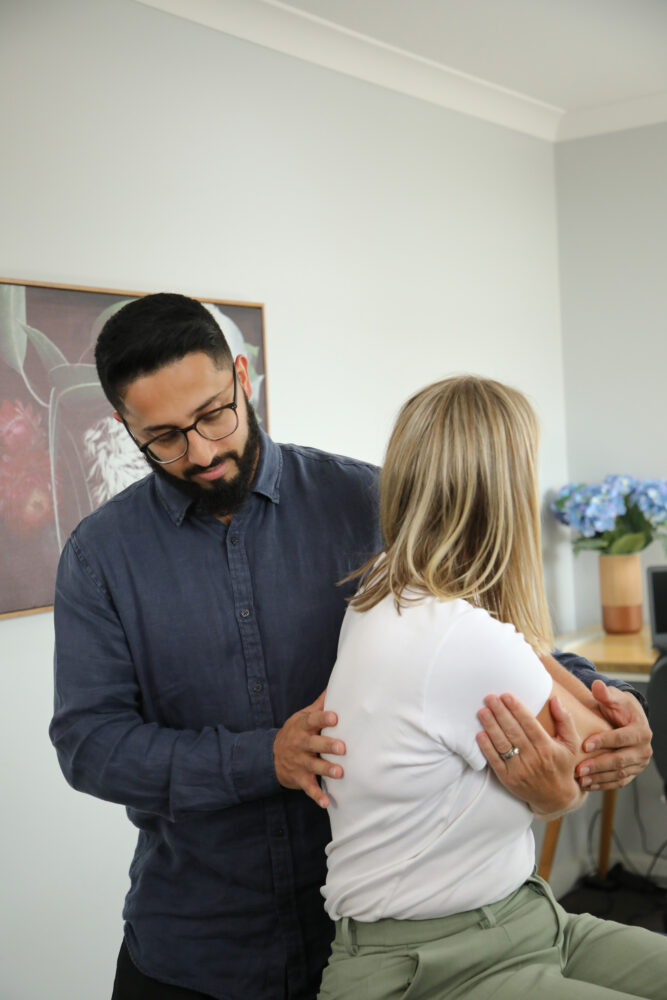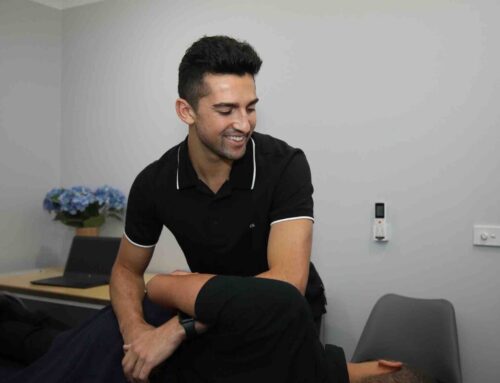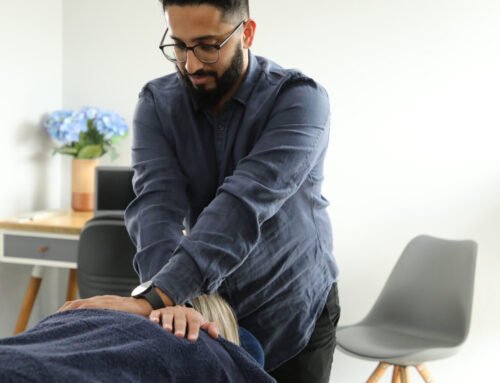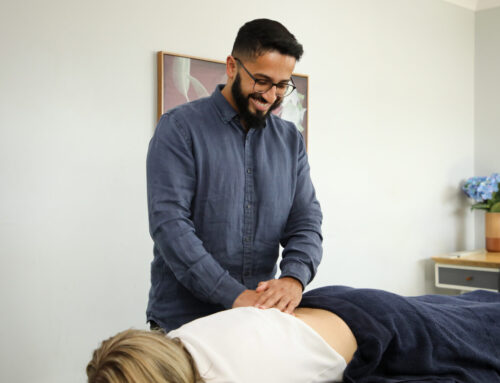As an osteopath, I see many clients with aches and pains often rooted in one key issue: poor posture. Good posture is more than standing up straight—it’s about maintaining proper alignment so your body can move efficiently without strain. Poor posture not only affects your spine and muscles but can also impact your energy levels, breathing, and even digestion. By making small adjustments, you can prevent discomfort, reduce pain, and improve overall well-being. Let’s explore why posture is essential and a few ways to improve it.
Why Good Posture Matters

Image: https://threesixtyosteo.co.nz/poor-posture-is-it-bad-for-my-health/
When we maintain poor posture—such as slouching at a desk or leaning over our phones—it places extra stress on our muscles, ligaments, and joints. Over time, this strain can lead to chronic pain, particularly in the neck, shoulders, and lower back. Poor posture can also cause issues like headaches, reduced lung capacity, and impaired digestion. The good news is that with a few adjustments, you can create healthier habits and keep these problems at bay.

Image: https://kongafitness.com/fix-poor-posture/
Quick Tips for Better Posture
- Set Up an Ergonomic Workspace: Position your computer screen at eye level, keep your shoulders relaxed, and ensure your feet are flat on the ground. Simple adjustments like using a cushion for back support or raising your chair to the right height can make a big difference.
- Stand with Awareness: When standing, imagine a string gently pulling you up from the top of your head. Keep your shoulders back, engage your core, and distribute weight evenly across both feet.
- Strengthen Your Core: Core strength is key for maintaining good posture. Exercises like planks or gentle core engagement can help support your spine and improve stability.
- Take Breaks to Move: Sitting or standing in one position for long periods can lead to stiffness and strain. Aim to change positions every 30 minutes, incorporating quick stretches or brief walks.
How Osteopathy May Help
Osteopaths use a variety of hands on techniques such as:
- Soft tissue massage
- Joint articulation
- Stretching
- Joint mobilsation
- Muscle energy techniques

Shockwave therapy can stimulate healing by breaking down scar tissue and increasing blood flow to affected areas, which is especially helpful for chronic pain caused by poor posture. Laser therapy is another non-invasive option that reduces inflammation and promotes healing on a cellular level, easing pain and helping you achieve a more balanced alignment. Click on the links provided to learn more about these therapies.
Combining these therapies with manual osteopathic techniques allows me to create a personalized plan that targets both the root causes and symptoms of poor posture. Over time, you’ll find that these adjustments lead to less pain, greater energy, and an improved sense of ease in daily life. If you’re ready to make meaningful changes to your posture and comfort, schedule a consultation at Pakenham osteopathy and start your journey toward better health.
If you have any questions, please feel free to email me directly: ammar@pakenhamosteopathy.com.au




